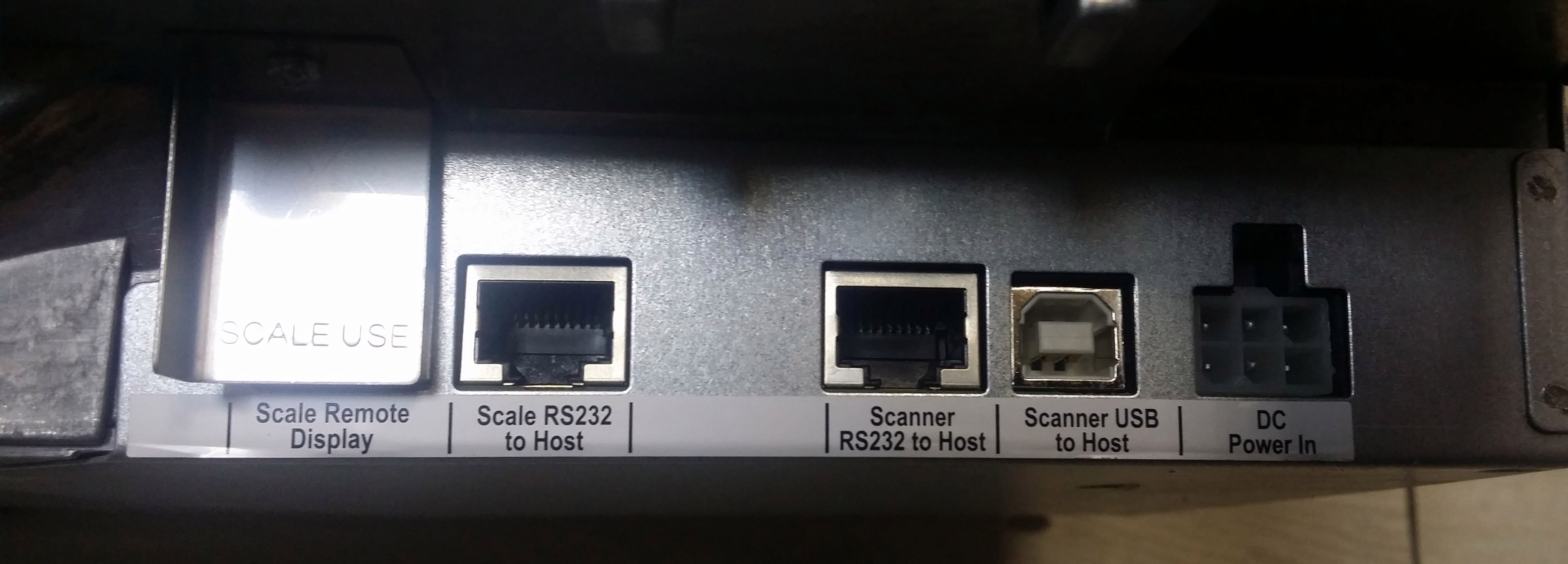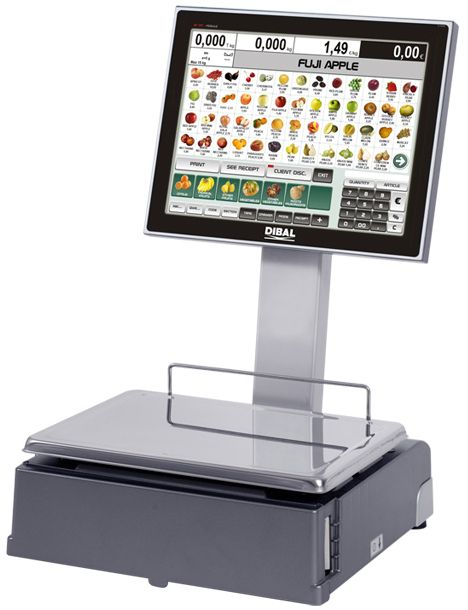How have the interfaces of trading scales changed

We talk about how modern trading scales are changing in terms of interfaces for the exchange and output of information.
Interfaces for the exchange of information
In chain stores, trading scales alone are no longer practical. Increasingly, they are being integrated into the general infrastructure of the outlet and with other trading equipment to improve business processes and obtain greater profits. This bundle leads to the fact that evolve and scales interfaces.
')
Russian experience shows that weights interfaces are used for integration with:
- back office (to transfer information from the back office to the scales) - for the most part, weights implemented in the sales area of the store, for example, self-service scales. However, platform scales installed at the place of acceptance of goods can sometimes be included in this category;
- cash equipment (ports, with the help of which the scales transmit data about the weighed goods to the cash desk) - relates to the cash register balance and scanner weights;
- self-service systems (transmit data directly to the self-service system) - concerns scanner scales and platform scales used to check the total weight of the basket;
- electronic price tags (transmit data to the electronic price tag system) - concerns counter scales with check printing;
- packaging and labeling mechanisms (used as a set of weighing, printing and labeling for the conveyor processing of goods) - mainly concerns the group of industrial scales.
Foreign experience covers everything that we have written above, but somewhat expands the use of scales: in foreign stores, the practice is widespread when these devices are used instead of a full-fledged cash register. Therefore, they are equipped with interfaces for receiving cashless payments and scanners. And instead of label printing printers, receipt printing printers. Therefore, such scales are supplied with cashier’s software.
The following interfaces are the most necessary (and, as a result, the most common) in chain stores for integrating scales with other trading equipment:
- in large retail networks - this is Ethernet, Wi-Fi (and, class not lower than N);
- in small networks, this is still a COM port.
It is also worthwhile to touch on the radio ports that solve the problems of integrating the scales with electronic price tags, and USB with the possibility of both receiving information on the scales and transmitting data from them to other equipment (allows not only unloading data to the scales using a flash drive, but also transmitting necessary information about goods for other equipment).
Understandably, these interfaces are constantly evolving due to changing business processes of retail chains. Take, for example, a group of scales with check printing. Previously, they were equipped with only one COM port, through which goods data and label templates were transferred to devices. Today, all such scales are equipped with Ethernet ports - thanks to this, it has become possible to control data transfer processes by key parameters, as well as to solve service tasks, for example, monitor the balance, their consumables and device updates.
In addition to Ethernet, as we said above, today it is widely used to integrate scales with other equipment and Wi-Fi. This is true in the case of stores with developed Wi-Fi infrastructure, where, in addition to weights, data collection terminals are actively used, for example. If earlier in such networks scales were equipped with Wi-Fi-modules of standard A, B, now it is G and N, basically, it is the N-standard.
In small networks where COM ports are used to integrate weights, RS232 was used before, and now mainly RS485. However, in their case, even the simplest scales began to be equipped with USB slots and, sometimes, mini- and micro-USB. For example, the scales Dibal DPOS400 are equipped with micro-USB, which allows not only at high speed through this interface to exchange data, but also to power the device. A set of such equipment can work with small POS-computers in convenience stores. And it is not necessary to have another charging port.

Manufacturers today, taking into account the new requirements for the integration of weights, are trying to put on the market relatively inexpensive models with a sufficient number of interfaces. So, the system self-service scales (for example, Dibal D900) are equipped with Ethernet ports, Wi-Fi, Home Plug.

And the self-service scales of the PC series today are generally released with a huge set of slots: four / six USB slots, PS / 2 (for connecting a keyboard and a mouse), several COM ports, and radio modules. In the old models, by the way, you can also find LPT for connecting an additional printer. This makes such scales a full-fledged working complex: the devices can be brought to a working state immediately at the place of their installation (adjust labels, display of goods, groups of goods on the screen).

Separate category - scanner scales. They are equipped with USB, COM for inclusion in the scanning module. The exception is CAS PDS2 - their scales are the main module, and the scanner is an additional element (scanner unit).


Interfaces to display information
An equally important block is the display of information on the scales screen. Most often, this parameter is important for the scales of self-service, installed in the sales area of the store, and, sometimes, counter scales.
Previously, these were devices with small monochrome displays, where, except for weight, cost per kilogram, nothing else was output. Therefore, the interface-interaction with them also remained fairly simple - DOS-commands or their own language of data exchange, and nothing else was needed - just enter the weight and print a pre-formed label.

Now the scales are becoming more similar to computers with multimedia displays, the size of which is increasing. In addition, the information output interfaces are changing. Previously, on the scales screen, you could, at best, see only the catalog of goods weighed (with their images). Now, on the device displays, engineers are finally starting to output multimedia (including video and audio).

Since the displays have become large, the scales' desktop interfaces allow you to place a lot of information: displaying more than one image of the goods being weighed, but, in addition to weight and cost, giving useful information or recommending additional products.
Weight management software
Interfaces with scales also change in terms of programs for outputting information to scales. Previously, we worked with text editors for labels, wrote scripts for them, thus specifying the nomenclature and the principles of its input. Now the interfaces that send information are also quite high-grade products. These are graphic designers, database controls that customize what the customer will see on the display and label. Moreover, this is a standard factor that all manufacturers take into account, starting from niche products with check printing of push-button scales that do not have multimedia screens and with which store employees work, and ending with PC self-service weights. These software products are increasingly one element for the entire range of weighing equipment of the same brand. Another option that uses, for example, “Pilot” is the development of a software product (in our case, ScaleService ), in which modules are configured to work with different brands, thereby simplifying for the client interfaces of interaction of the accounting system with weights from different manufacturers.
Source: https://habr.com/ru/post/345128/
All Articles